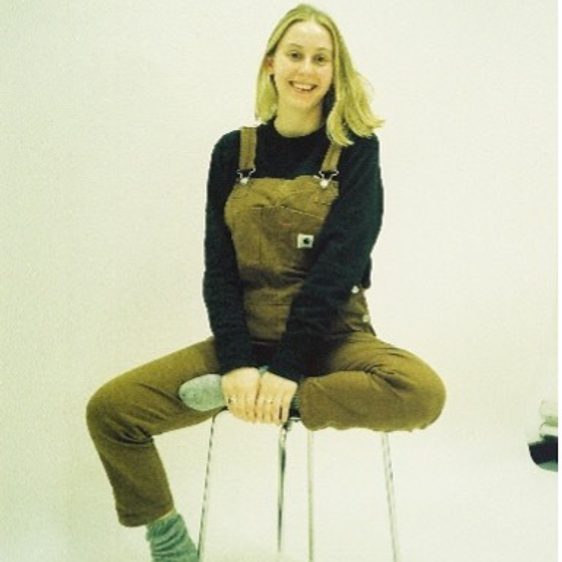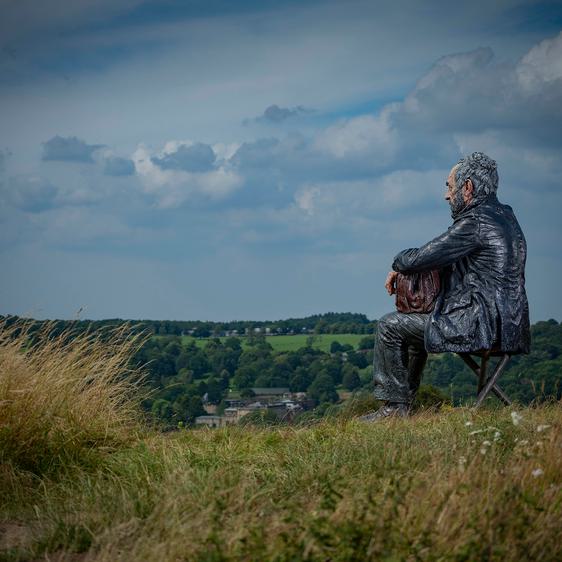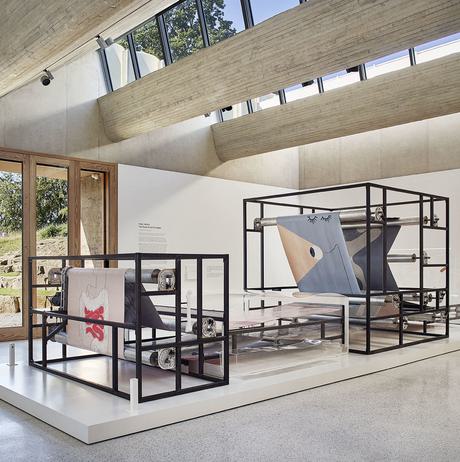
About Holly Hendry: The Dump is Full of Images
Hendry’s practice is often focused on themes of decay, the body, material use and re-use, and incorporated these ideas with her fascination with the imitation of life to create her first kinetic sculpture alongside other new work for the exhibition The Dump is Full of Images.
Referencing ideas relating to skin as a physical ‘container’ of the body, Hendry produced a skin-like material inlaid with images and objects, persistently moved through a system of rollers within an 8-metre long machine. Brightly coloured images within the material included cartoon-like illustrations of what lay beneath the surface, in this case anatomy, food and detritus.
During the planning stages of the exhibition Hendry met with Professor Parik Goswami, Professor in Technical Textiles at Hudddersfield University, to discuss the connections between each of their interests and how they apply those in their respective specialisms. Goswami's research revolves around new materials for use in science and medicine and Hendry’s interest in this across her work stems from her own research into the skin’s function as a barrier, sustainability and notions of touch.
Hendry graduated from the Royal College of Art in 2016 and quickly established a highly productive and respected practice. She was chosen by Helen Pheby, Head of Curatorial Programme at YSP, and Selfridges, as the inaugural artist for the co-curated Art Block in Selfridges’ London flagship store. The resulting installation Phyllis, at nearly four-metres tall, featured rubble spoil from the construction of the new Duke Street Accessories Hall, referencing issues of waste and recycling. The work takes its name from one of the digging machines which had to be abandoned underground after excavating tunnels for the London Crossrail dig.
You might also like
- Art Outdoors

Ursula von Rydingsvard: Damski Czepek
Damski Czepek translates as ‘lady’s bonnet’, and has a central hood-like form, with snaking ribbons extending out into the landscape. The shape welcomes you in and envelopes you, and echoes some of the eighteenth-century follies across the estate, such as the Shell Grotto. 
Louise Lockhart: Cake Crumbs and Lemonade
–Cake Crumbs and Lemonade will be the largest solo exhibition to date by illustrator Louise Lockhart (aka The Printed Peanut).- News

Staff profile: Elsie Swannick, Retail Development and E-commerce Officer at YSP
11 November 2025 - Art Outdoors

Sean Henry: Seated Figure
